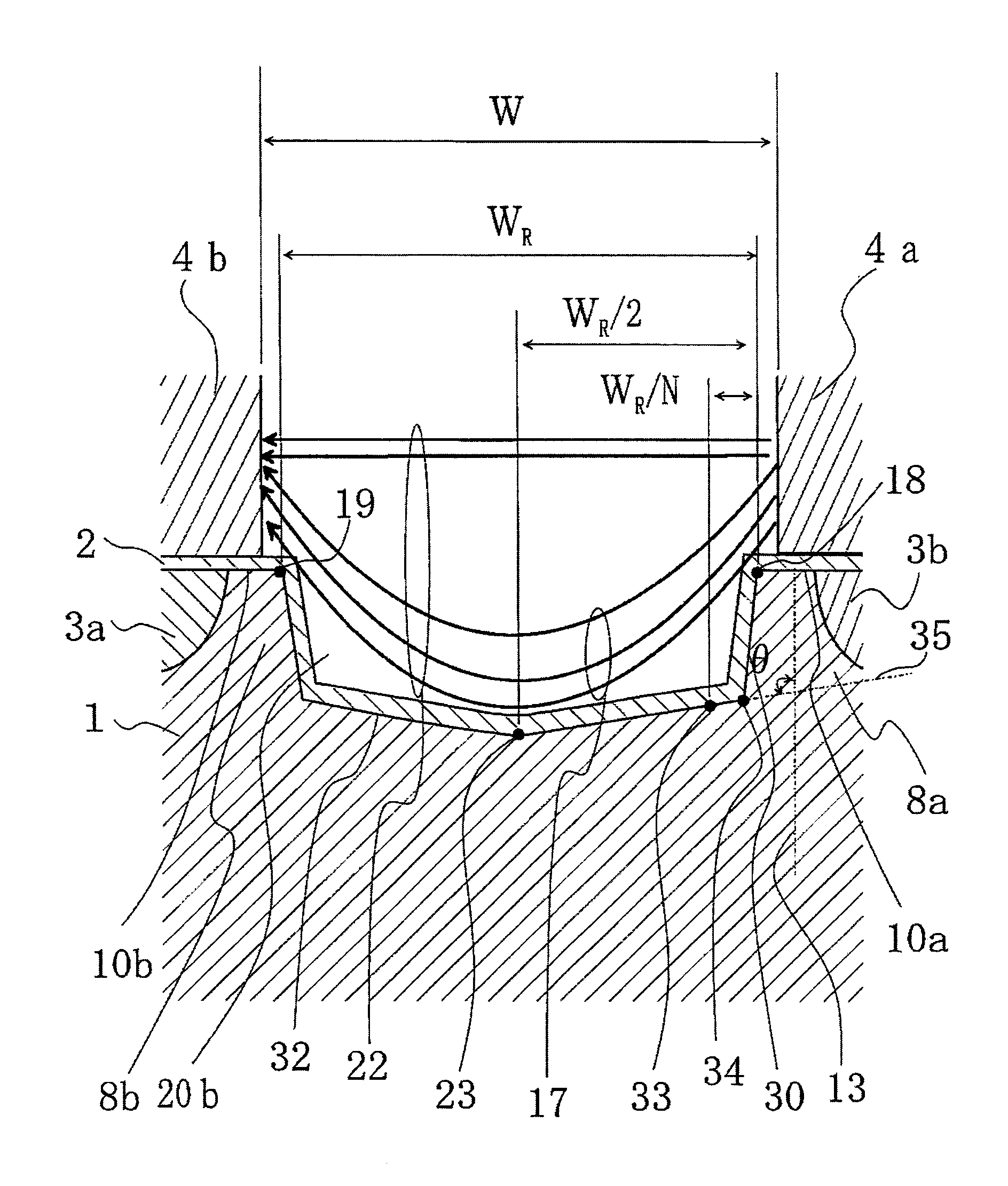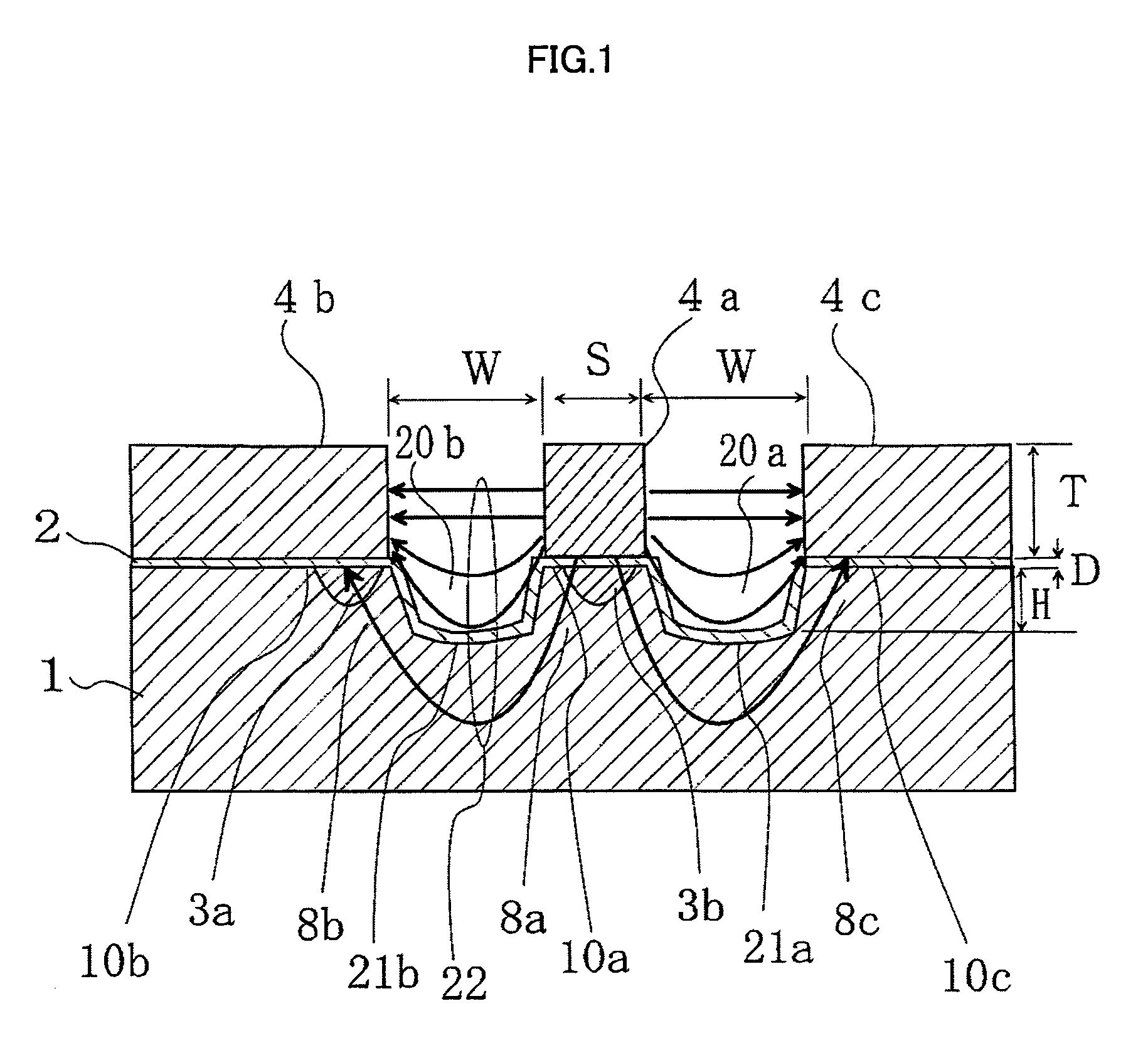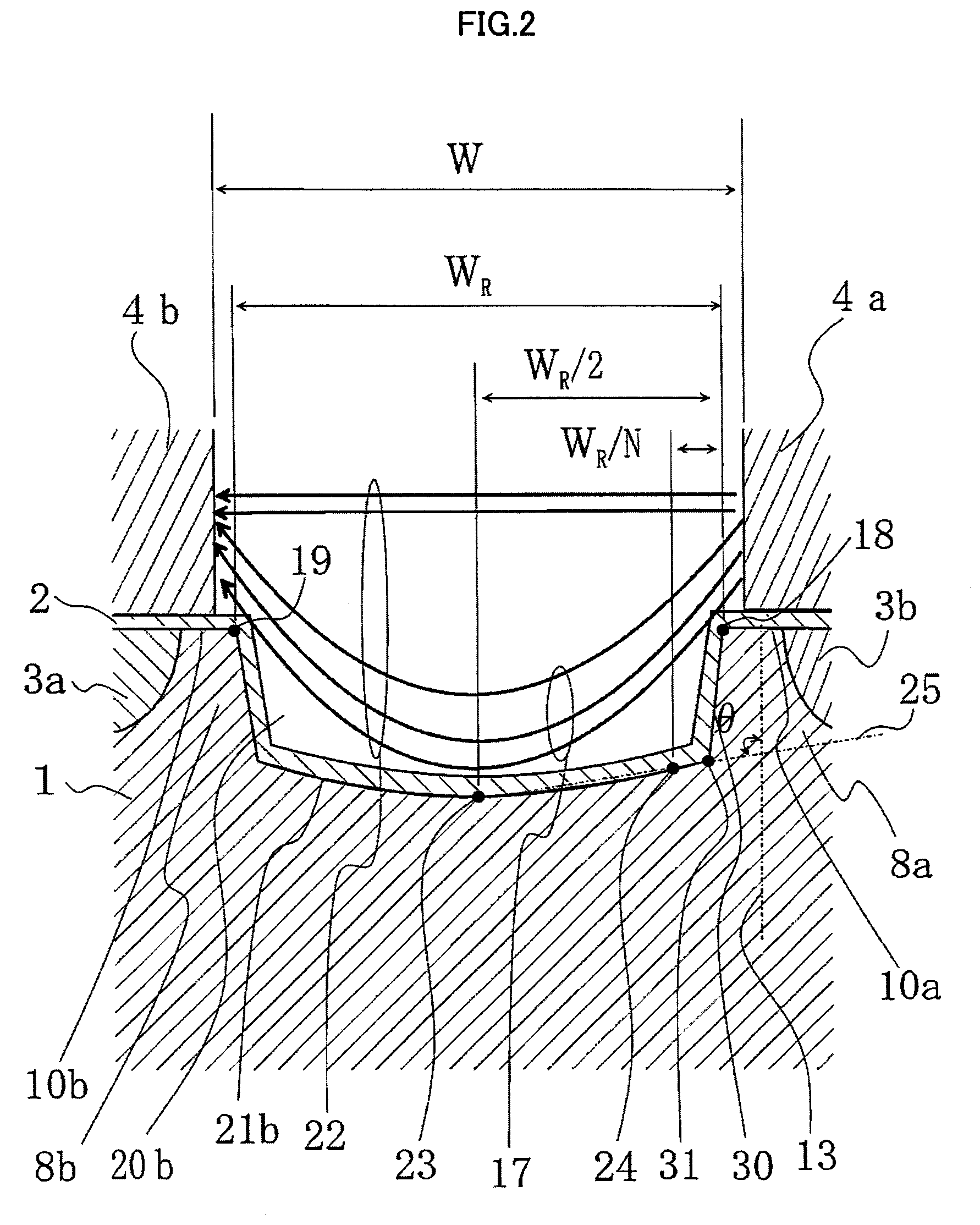Optical modulator
a technology of optical modulator and optical modulator, applied in the field of optical modulator, can solve the problems of increasing the number of optical modulators, high cost of ln optical modulators, and still encountering problems to be solved, so as to reduce the driving voltage, reduce the relative permittivity, and reduce the effect of microwave equivalent refractive index
- Summary
- Abstract
- Description
- Claims
- Application Information
AI Technical Summary
Benefits of technology
Problems solved by technology
Method used
Image
Examples
first embodiment
[0056]FIG. 1 is a sectional view schematically showing the optical modulator according to the first embodiment of the present invention. In this embodiment, the z-cut LN substrate 1 is not etched with dry etching method at the portions below the ground electrodes 4b and 4c, which is different from the optical modulator according to the second prior art shown in FIG. 12. However, it goes without saying that the z-cut LN substrate 1 may be etched at the portions below the ground electrodes 4b and 4c.
[0057]According to this first embodiment, the width “S” of the center electrode 4a is set at 9 μm, the gap “W” between the center electrode 4a and each of the ground electrodes 4b and 4c is set at 30 μm, the thickness “T” of the center electrode 4a and ground electrodes 4b and 4c is set at 18 μm, the height “H” of the ridge portion is set at 3 μm, and the thickness “D” of the SiO2 buffer layer 2 at the bottom surfaces 21a and 21b between the ridge portions and at the top parts 10a to 10c ...
second embodiment
[0075]Referring now to FIG. 7 of the accompanying drawings, an optical modulator according to the second embodiment of the present invention will be described hereinafter.
[0076]The constitutional elements of the second embodiment shown in FIG. 7 the same as those of the first embodiment of the optical modulator will not be described but bear the same reference numerals and legends as those of the first embodiment of the optical modulator.
[0077]FIG. 7 is an enlarged view showing the optical modulator according to the second embodiment of this invention. In this embodiment, the line 25 passing through the center point 23 and the midway point 24 is crossed at an angle θ larger than 90.1° with the normal line 13 to the top part 10a of the ridge portion 8a. In this second embodiment, portions 26 and 27, proximity to the intersections defined by the bottom surface 21b and the respective ridge portions 8a and 8b, have a curvature with the radius of “R”. It is preferable that the radius “R”...
third embodiment
[0078]Referring now to FIG. 8 of the accompanying drawings, an optical modulator according to the third embodiment of the present invention will be described hereinafter.
[0079]The constitutional elements of the third embodiment shown in FIG. 8 the same as those of the above mentioned embodiments of the optical modulator will not be described but bear the same reference numerals and legends as those of the above mentioned embodiments of the optical modulator.
[0080]FIG. 8 is an enlarged view showing the optical modulator according to the third embodiment of this invention. In this third embodiment, the optical modulator is characterized by the fact that most part of the bottom surface 32 between the ridge portions 8a, 8b is formed by an inclined flat surface. The bottom surface 32 between the ridge portions 8a and 8b has a center point 23 positioned with the distance of WR / 2 in a horizontal direction from the end point 18 of the top part 10a of the ridge portion 8a below the center el...
PUM
| Property | Measurement | Unit |
|---|---|---|
| angle | aaaaa | aaaaa |
| curvature radius | aaaaa | aaaaa |
| temperature | aaaaa | aaaaa |
Abstract
Description
Claims
Application Information
 Login to View More
Login to View More - R&D
- Intellectual Property
- Life Sciences
- Materials
- Tech Scout
- Unparalleled Data Quality
- Higher Quality Content
- 60% Fewer Hallucinations
Browse by: Latest US Patents, China's latest patents, Technical Efficacy Thesaurus, Application Domain, Technology Topic, Popular Technical Reports.
© 2025 PatSnap. All rights reserved.Legal|Privacy policy|Modern Slavery Act Transparency Statement|Sitemap|About US| Contact US: help@patsnap.com



